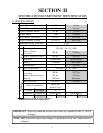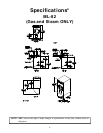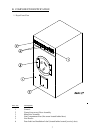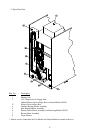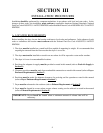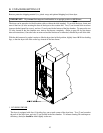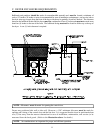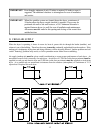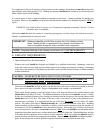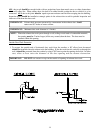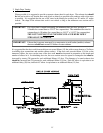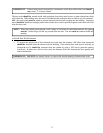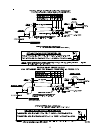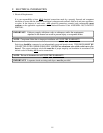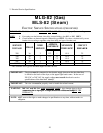
13
To compensate for the use of registers or louvers used over the openings, this makeup air must be increased by
approximately thirty-three percent (33%). Makeup air openings should not be located in an area directly near
where exhaust vents exit the building.
It is not necessary to have a separate makeup air opening for each dryer. Common makeup air openings are
acceptable. However, they must be set up in such a manner that the makeup air is distributed equally to ALL the
dryers.
EXAMPLE: For a bank of four (4) dryers, two (2) unrestricted openings measuring 2 feet by 2-1/2 feet
(10 square feet) is acceptable.
Allowances must be made for remote or constricting passageways or where dryers are located at excessive
altitudes or predominantly low pressure areas.
IMPORTANT: Makeup air must be provided from a source free of dry cleaning solvents
fumes. Makeup air that is contaminated by dry cleaning solvent fumes will
result in irreparable damage the motors and other dryer components.
NOTE: Component failure due to dry cleaning solvent fumes will VOID THE WARRANTY.
E. EXHAUST REQUIREMENTS
1. General Exhaust Duct Work Information
Exhaust duct work should be designed and installed by a qualified professional. Improperly sized duct
work will create excessive back pressure which results in slow drying, increased use of energy, overheating
of the dryer, and shutdown of the burner by the airflow (sail) switches, burner hi-limits, or basket (tumbler)
hi-heat thermostats.
CAUTION: DRYER MUST BE EXHAUSTED TO THE OUTDOORS.
CAUTION: IMPROPERLY SIZED OR INSTALLED EXHAUST DUCT WORK CAN
CREATE A POTENTIAL FIRE HAZARD.
The duct work should be laid out in such a way that the duct work travels as directly as possible to the out-
doors with as few turns as possible. Single or independent dryer venting is recommended.
When single drying venting is used the length of duct work from the dryer to the outside exhaust outlet
should not exceed fifteen (15) feet. The minimum diameter of this duct work must be at least 14 inches
In the case of multiple (common) dryer venting, the distance from the last dryer to the outside exhaust outlet
should not exceed (15) feet. The shape of the duct work is not critical so long as the minimum cross-
sectional area is provided. It is suggested that the use of 90° turns be avoided; use 30° and/or 45° angles
instead. The radius of the elbows should preferably be 1-1/2 times the diameter of the duct. Including
basket (tumbler) and dryer elbow connections or elbows used for outside protection from the weather, no
more than two (2) elbows should be used in the exhaust duct run. If more than two (2) elbows are used, the
cross sectional area of the duct work must be increased. ALL duct work should be smooth inside with no
projections from sheet metal screws or other obstructions which will collect lint. When adding ducts, the duct
to be added should overlap the duct to which it is to be connected. ALL duct work joints must be taped to
prevent moisture and lint from escaping into the building. Inspection door should be installed at strategic
points in the exhaust duct work for periodic inspection and clean-out of lint from the duct work.



